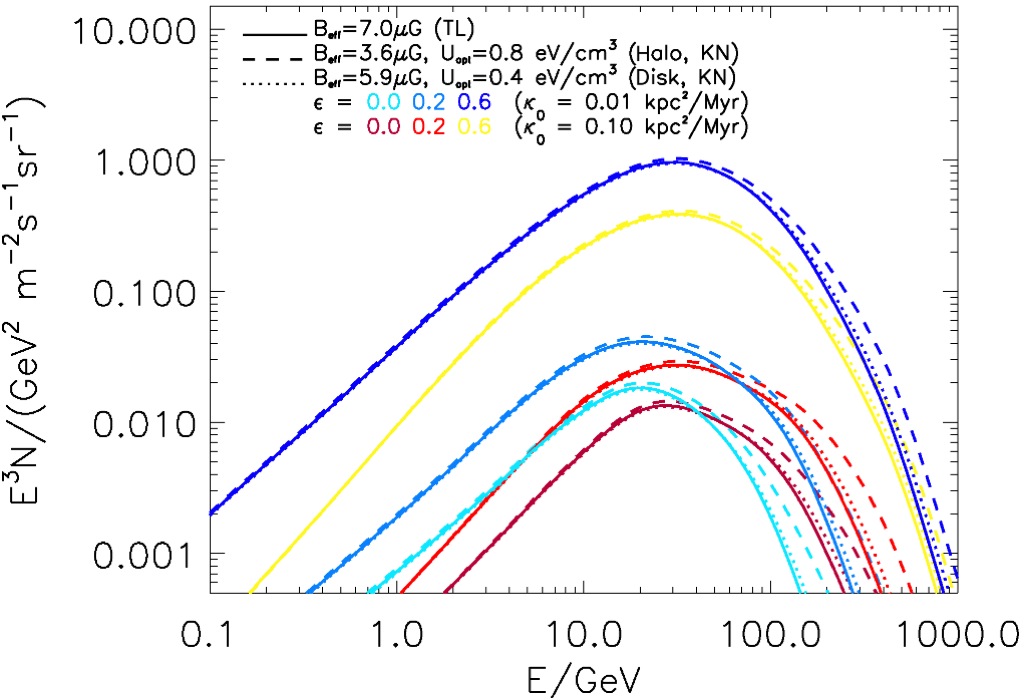The enigma surrounding cosmic-ray positrons has captivated astrophysicists for decades, particularly in light of the puzzling excess of positrons observed at high energies. One of the most compelling hypotheses regarding the origin of these positrons implicates millisecond pulsars, rapidly rotating neutron stars that emit beams of electromagnetic radiation. This discourse aims to explore the intricate relationship between pulsars and the cosmic positron excess, addressing significant observations and the underlying reasons for continued scientific fascination.
The phenomenon of cosmic-ray positrons was notably highlighted by the PAMELA (Payload for Antimatter Matter Exploration and Light-nuclei Astrophysics) satellite, which reported an unexpected surplus of positrons in the energy range of 10 GeV to 100 GeV. This observation not only deviated from the anticipated behavior of cosmic rays, which generally present a decline in intensity at higher energies, but it also raised pivotal questions concerning their origins. Traditional models attributing cosmic-ray positrons predominantly to the annihilation of dark matter particles have gained traction. However, astrophysical sources, particularly millisecond pulsars, are rapidly emerging as critical components in uncovering this cosmic mystery.
Millisecond pulsars, which possess rotation periods on the order of milliseconds, have been postulated to be robust sources of high-energy gamma rays and positrons. The underlying mechanism involves the accelerated particles, primarily electrons and positrons, produced in the pulsar magnetosphere. As these pulsars rotate, their magnetic fields act as colossal accelerators, converting rotational energy into kinetic energy for charged particles. This phenomenon is manifest in the emission of intense beams of radiation, observable across the electromagnetic spectrum, including gamma rays. The significant power of these pulsars, coupled with the substantial energy of the emitted particles, positions them as plausible candidates for the aforementioned positron excess.
The distribution of pulsars throughout the Milky Way Galaxy further substantiates their potential role in the cosmic positron narrative. Pulsars are predominantly located in the Galactic disk, where the density of stellar populations is higher. Consequently, the likelihood of positron production from these pulsars increases in regions where they can interact and collide with surrounding interstellar medium (ISM) and other cosmic entities. Furthermore, millisecond pulsars often reside in binary systems, which may amplify their efficiency in ejecting particles into the surrounding space. It is essential to consider that the cumulative contribution of numerous pulsars may account for a significant fraction of the observable positron flux, necessitating an exploration of their collective impact.
Conversely, while the millisecond pulsar hypothesis presents an intriguing avenue for investigation, it necessitates rigorous scrutiny of the energetic yield required to produce the observed positron excess. For pulsars to sufficiently contribute, their emission mechanisms must be capable of accelerating particles to the requisite energy levels. This consideration has catalyzed intensive theoretical and computational modeling, striving to reconcile the pulsar energetics with the contrasting data recorded by modern instruments. Notably, simulations suggest that emissions from multiple pulsars, rather than a select few, must be considered to construct a more accurate representation of the positron spectrum.
Moreover, the implications of these studies extend beyond mere observations; they touch upon questions of fundamental physics, particularly concerning particle interactions in extreme astrophysical environments. The dynamics involved in the production and propagation of positrons elucidate the nature of cosmic ray acceleration and the processes governing high-energy astrophysics. The exploration of pulsar contributions sheds light on the hierarchical structure of our Galaxy, promoting discussions on star formation, stellar evolution, and the violent end states of massive stars.
In the larger context of astrophysics, the pursuit to elucidate the origins of the excess positron signal interweaves a tapestry of interdisciplinary inquiries, unifying particle physics and cosmology. The interstellar milieu, populated by pulsars, serves as a crucible for high-energy processes that may harbor clues pertaining to fundamental interactions, including the nature of antimatter and the enigmatic dark matter. Each data point amassed from observatories, such as the Fermi Gamma-ray Space Telescope, builds essential links in this evolving discourse. The investigation serves not only to clarify the heretofore elusive origins of positrons but also to probe the very fabric of our underlying physical theories.
Indeed, the compelling association of millisecond pulsars with cosmic-ray positrons generates profound implications that resonate through the scientific community. As researchers endeavor to reconcile observational data with theoretical frameworks, an appreciation for the complexities inherent in these astrophysical phenomena emerges. Pulsars, as rapid emitters of high-energy particles, are not merely celestial objects of interest but active participants in the cosmic dance of matter and antimatter.
In conclusion, the elucidation of the positron excess remains a salient challenge, evoking rigorous investigations into the astrophysical processes at play. Millisecond pulsars occupy a position at the intersection of these inquiries, standing as titans of energy production and particle acceleration. Moving forward, the continued advancement of observational technology and theoretical models will be crucial in piecing together the multifaceted puzzle of cosmic-ray positrons, ultimately enriching the discipline of astrophysics and enhancing our understanding of the universe at large.








